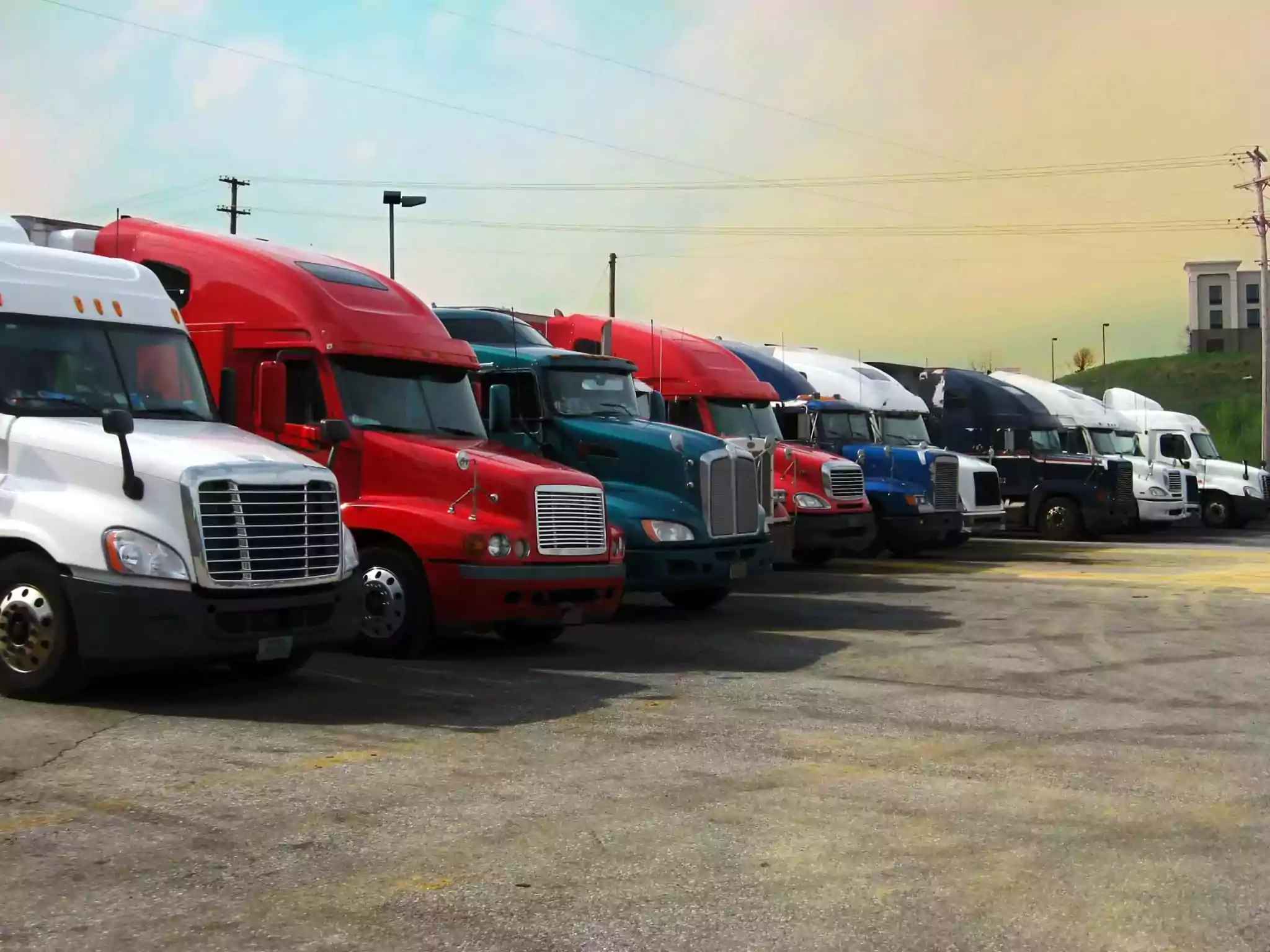
As a professional trucker, you may have heard about Electronic Logging Devices (ELDs) and their importance in the trucking industry. In this complete guide, we will cover everything you need to know about ELDs, from understanding the basics to choosing the right device for your needs and using it effectively. So, let’s buckle up and dive into the world of ELDs!
Understanding the Basics of ELDs
Definition and Purpose of ELDs
First things first, what exactly are ELDs? Electronic Logging Devices are electronic systems designed to record a driver’s Record of Duty Status (RODS) to ensure compliance with Hours of Service (HOS) regulations. In simpler terms, ELDs replace traditional paper logs, making it easier for both truckers and authorities to track and manage driving hours.
ELDs are equipped with advanced technology that not only tracks driving hours but also monitors vehicle movements, engine hours, and location data. This comprehensive approach provides a more accurate and detailed picture of a driver’s activities, helping to enhance safety and compliance within the trucking industry.
The Importance of ELDs in Trucking
ELDs play a crucial role in the trucking industry. They not only improve safety on the roads by reducing driver fatigue, but they also help streamline operations and increase efficiency. With accurate and automated logging, ELDs provide real-time data for fleet managers that can be used for optimizing routes, managing maintenance schedules, and improving overall productivity.
Moreover, ELDs contribute to a more transparent and accountable transportation system by ensuring that drivers adhere to legal driving limits and rest requirements. This level of oversight not only benefits individual drivers and companies but also promotes a culture of responsibility and safety across the entire industry.
Key Features of ELDs
When it comes to choosing the right ELD, understanding the key features is essential. ELDs should provide various functionalities, such as automatic recording of driving time, identification of location, and easy access to recorded data. Additionally, they should be user-friendly and comply with the Federal Motor Carrier Safety Administration (FMCSA) regulations.
Some advanced ELD models also offer additional features like integration with other fleet management systems, predictive maintenance alerts, and customizable reporting options. These enhanced capabilities not only simplify compliance with regulations but also empower fleet managers to make data-driven decisions that can lead to cost savings and operational improvements.
The Legal Requirements for ELDs
Federal ELD Mandate
The Federal ELD Mandate, implemented in December 2017, requires commercial motor vehicle drivers to use ELDs that meet the FMCSA’s technical specifications. This mandate aims to improve safety and ensure accurate recording of driving hours. As a trucker, it’s essential to comply with the regulations and have a certified ELD installed in your vehicle.
ELDs, or Electronic Logging Devices, are designed to automatically record a driver’s Record of Duty Status (RODS) and ensure compliance with Hours of Service (HOS) regulations. These devices not only help in monitoring driving hours but also assist in reducing the risk of driver fatigue-related accidents on the road. By accurately tracking and managing hours of service, ELDs contribute to a safer working environment for truckers and other road users.
Compliance Deadlines and Extensions
If you’re wondering about compliance deadlines and extensions, here’s what you need to know. Most commercial motor vehicle drivers were required to switch to ELDs by December 16, 2019. However, there are certain exemptions and extensions depending on specific circumstances, such as vehicles with older engines or agricultural operations. Familiarize yourself with the deadlines and seek any necessary extensions if applicable.
It’s crucial for drivers and fleet managers to stay informed about any updates or changes in the ELD mandate requirements to ensure continuous compliance. Regularly checking for new guidelines or modifications in the regulations can help avoid any misunderstandings or oversights that may lead to non-compliance issues. Keeping abreast of the latest information regarding ELDs showcases a commitment to safety and adherence to industry standards.
Penalties for Non-Compliance
Non-compliance with the ELD mandate can result in penalties, which can include fines and even being placed out of service. To avoid these consequences, make sure you follow the regulations, use a certified ELD, and maintain accurate records of your driving hours.
Ensuring that your ELD is properly installed, regularly updated, and functioning correctly is essential to prevent any violations or penalties. By prioritizing ELD compliance and staying proactive in addressing any issues or concerns promptly, drivers can uphold safety standards, avoid penalties, and contribute to a more efficient and secure transportation industry.
Choosing the Right ELD for Your Needs
Factors to Consider When Selecting an ELD
When choosing an ELD, there are several factors to consider. Think about your specific needs, such as the size of your fleet, the type of vehicle you drive, and your budget. Look for ELDs that offer user-friendly interfaces, reliable customer support, and integrations with other fleet management systems.
Additionally, consider the scalability of the ELD system. As your business grows, you may need to add more vehicles to your fleet, so choosing a system that can easily accommodate expansion is crucial. Look for ELD providers that offer flexible plans and options to upgrade as needed.
Comparing Different ELD Brands
With so many ELD brands available on the market, it’s important to compare and evaluate your options. Read customer reviews, check the FMCSA’s list of certified providers, and consider the reputation and reliability of the brand. Remember, it’s not just about the price, but the quality and functionality of the device.
Furthermore, look into the data security measures implemented by each ELD provider. Since ELDs store sensitive information about your fleet and drivers, ensuring that the system has robust security features is essential. Look for encryption protocols, secure data storage practices, and regular software updates to protect your data from potential breaches.
Installation and Setup Process
Installing and setting up an ELD may vary depending on the provider and the type of device you choose. Generally, it involves connecting the ELD to the vehicle’s engine and installing the accompanying software on a mobile device or tablet. Make sure to follow the instructions provided by the manufacturer and seek assistance if needed.
It’s also important to consider the training and onboarding process offered by the ELD provider. Ensure that they offer comprehensive training for your drivers and staff to effectively use the system. A good onboarding process can help minimize disruptions to your operations during the transition to using an ELD.
How to Use ELDs Effectively
Training for Drivers and Fleet Managers
Using Electronic Logging Devices (ELDs) effectively requires proper training for both drivers and fleet managers. Familiarize yourself with the functionalities of the ELD, such as logging in and out, editing logs, and conducting vehicle inspections. Understanding these features will ensure that you can navigate the ELD system with ease and efficiency.
For fleet managers, it is essential to receive comprehensive training on accessing and analyzing the data generated by the ELDs. This data provides valuable insights into driver behavior, vehicle performance, and compliance. By understanding how to interpret this information, fleet managers can make informed decisions that optimize operations and enhance overall efficiency.
Troubleshooting Common ELD Issues
Like any technology, ELDs can sometimes encounter issues. However, being prepared to troubleshoot common problems can help minimize disruptions and ensure smooth operations. Some of the common issues that may arise include connectivity problems, software glitches, or log discrepancies.
If you encounter any issues with your ELD, it is crucial to reach out to the ELD provider’s customer support for assistance. They can guide you through the troubleshooting process and provide solutions tailored to your specific situation. By being proactive in resolving any issues, you can maintain accurate and compliant recordkeeping, avoiding potential penalties or fines.
Maximizing the Benefits of ELDs
ELDs offer more than just compliance with regulations; they provide numerous benefits for truckers and fleet managers. To maximize these benefits, it is important to leverage the data provided by the ELDs for better decision-making.
One way to make the most of ELD data is by using it for better route planning. By analyzing historical data on travel times, traffic patterns, and driver behavior, fleet managers can optimize routes to minimize delays and improve overall efficiency. This not only saves time but also reduces fuel consumption, leading to cost savings for the company.
In addition to route planning, ELD data can also be used to improve fuel efficiency. By monitoring driver behavior, such as excessive idling or aggressive acceleration, fleet managers can identify areas where fuel consumption can be reduced. Implementing driver training programs based on this data can lead to significant fuel savings and a more environmentally friendly fleet.
Furthermore, ELD data can help fleet managers enhance operational efficiency by optimizing driver schedules. By analyzing driver hours of service, rest periods, and work patterns, fleet managers can create schedules that maximize productivity while ensuring compliance with regulations. This leads to better resource allocation, improved customer service, and increased profitability.
With this expanded guide to ELDs, you now have a more comprehensive understanding of these electronic logging devices. Remember, ELDs not only help you comply with regulations but also offer numerous benefits for truckers and fleet managers. So, embrace the technology, choose the right ELD for your needs, and enjoy smoother and more efficient operations on the road.




